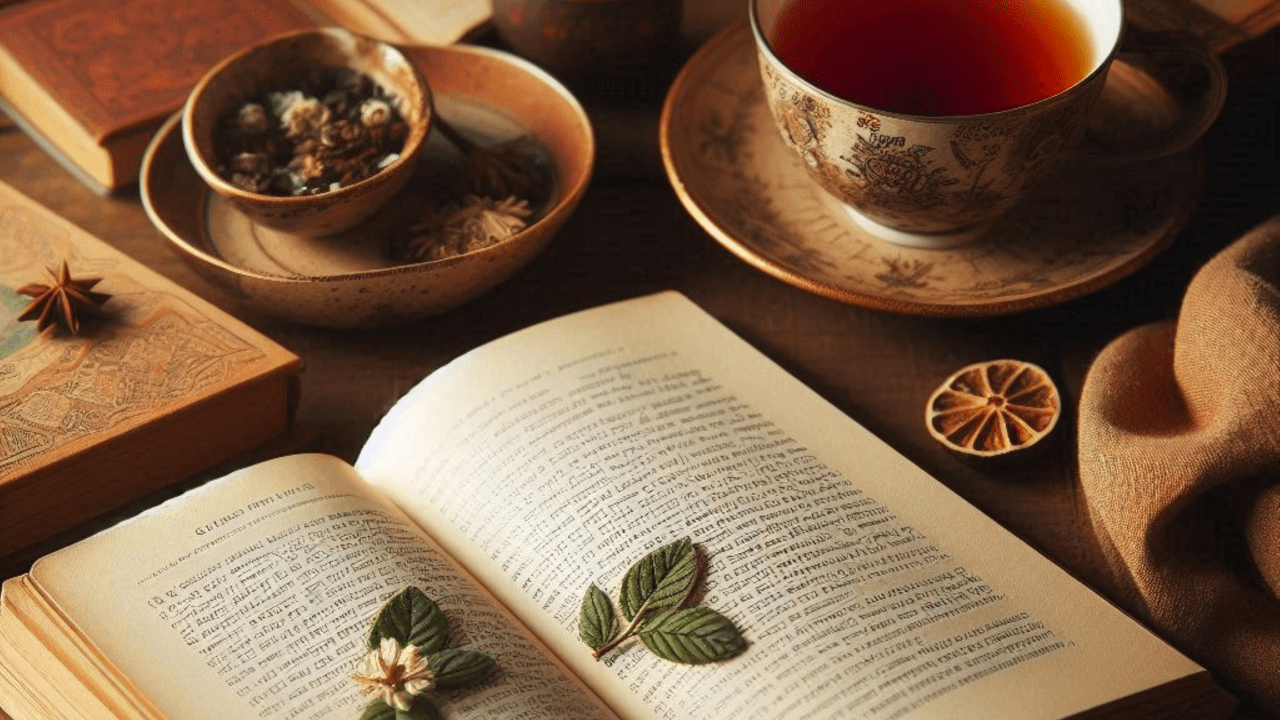Where There Is Tea, There Is Hope: A Journey Through the History of Tea

Tea is more than just a drink. It is a symbol of comfort, a ritual of connection, and a carrier of hope. Arthur Wing Pinero’s timeless quote, "Where there is tea, there is hope," captures the essence of this beloved beverage—offering solace in moments of distress, a pause in the busyness of life, and a reminder that things can get better. But what makes tea so profoundly connected to hope? To understand, we must travel back in time and follow the journey of tea through history.
The Origins of Tea: A Serendipitous Discovery
The story of tea begins in ancient China, where, as legend has it, the drink was discovered by accident. In 2737 BCE, Emperor Shen Nong was boiling water when a few leaves from a wild tree blew into his pot. The resulting infusion intrigued him, and he found the brew both refreshing and invigorating. Thus, tea was born. It wasn’t long before tea became an essential part of Chinese culture, cherished not only for its taste but also for its medicinal properties.
By the Tang dynasty (618–907 CE), tea drinking had evolved into a sophisticated art form, celebrated for its role in calming the mind and nurturing the body. As a tonic for the soul, tea was seen as a symbol of serenity and hope in times of turmoil.
Tea Spreads to the World: A Hopeful Trade
From China, tea began its journey across the globe. Buddhist monks carried tea seeds to Japan in the early 9th century, where the drink became integral to the Zen philosophy, celebrated in the ritualistic Japanese tea ceremonies. The tea ceremony itself embodies mindfulness and the notion of finding peace amid life’s chaos—a moment of hope and reflection in a fast-paced world.
In the 17th century, European traders brought tea to the West. The Dutch and the Portuguese were the first to introduce it to Europe, but it was in Britain where tea truly found a home. With its popularity soaring in the 18th century, tea became more than a drink in Britain; it became a national obsession, synonymous with daily life. Afternoon tea and teatime traditions were born, becoming moments of solace and rejuvenation for millions. As the industrial revolution swept through the world, with its long work hours and social upheavals, tea breaks offered a brief but essential respite—fueling both hope and productivity.
Tea and Colonialism: A Story of Conflict and Hope
The global expansion of tea, however, was not without conflict. The British thirst for tea led to one of history’s most significant events: the Opium Wars. To offset the cost of tea imported from China, Britain began trading opium in exchange. The resulting addiction crisis in China caused great social unrest and ultimately led to war.
Yet, even during these turbulent times, tea remained a symbol of hope. When British colonists introduced tea cultivation to India in the early 19th century, particularly in Assam and Darjeeling, the crop helped India’s economy flourish. Indian tea became one of the most sought-after varieties globally, cementing its place as a world leader in tea production. For many Indian farmers, tea plantations represented hope for economic prosperity.
The Social Role of Tea: Bringing People Together
Throughout history, tea has brought people together in both high and humble settings. In British drawing rooms, tea was the center of social gatherings, while in Chinese tea houses, it served as a drink for common folk. During World War II, tea became a lifeline for British soldiers, offering them a semblance of home and hope amid the battlefields. Even today, the act of sharing tea with others represents more than just hospitality; it’s an act of solidarity and connection.
In many cultures, tea has taken on a spiritual dimension, offering a way to pause, reflect, and reset. The Japanese tea ceremony, Chinese Gongfu tea rituals, and Indian chai breaks all emphasize the importance of mindfulness, a reminder that no matter how hectic life becomes, there’s always time for a cup of tea—and, with it, hope.
Tea in the Modern World: Hope for Well-Being
In today’s world, tea continues to offer hope, particularly for health and well-being. Research has shown that various types of tea, such as green, black, and herbal teas, are packed with antioxidants and other compounds that promote heart health, reduce stress, and boost the immune system. In the wellness industry, tea has found new life as a symbol of self-care and mindfulness.
From detox teas to soothing herbal blends, tea has become synonymous with both physical and emotional healing. With every sip, tea encourages us to slow down and find balance—qualities that embody the very nature of hope.
The Future of Tea: Sustainable Hope
As the global demand for tea grows, so does the need for sustainable practices in tea cultivation. Fair trade and organic tea farming practices are on the rise, offering a glimmer of hope for both the environment and the livelihoods of farmers. Many tea producers are shifting toward eco-friendly practices, ensuring that future generations can continue to enjoy tea’s benefits.
Conclusion: A Cup of Hope
As we pour ourselves a cup of tea, we are not just partaking in an ancient beverage but engaging in a timeless ritual that connects us to centuries of history and hope. From its accidental discovery in China to its role as a global symbol of wellness and mindfulness, tea continues to be a source of comfort in times of need.
Arthur Wing Pinero was right: where there is tea, there truly is hope. Whether it’s a cup shared with friends, a moment of solitude after a long day, or a ritual to focus the mind, tea reminds us that hope is always within reach—just a sip away.

About the Author:
Dr. Garima Pandey is a dedicated tea connoisseur with a profound understanding of the intricate flavors and cultural significance of tea. With a background in research on medicinal plants, she brings a unique perspective to the world of tea, exploring its health benefits and its role in traditional medicine. Her expertise bridges the gap between the soothing ritual of tea and the healing properties of nature, making her a thoughtful advocate for wellness through this ancient beverage.


